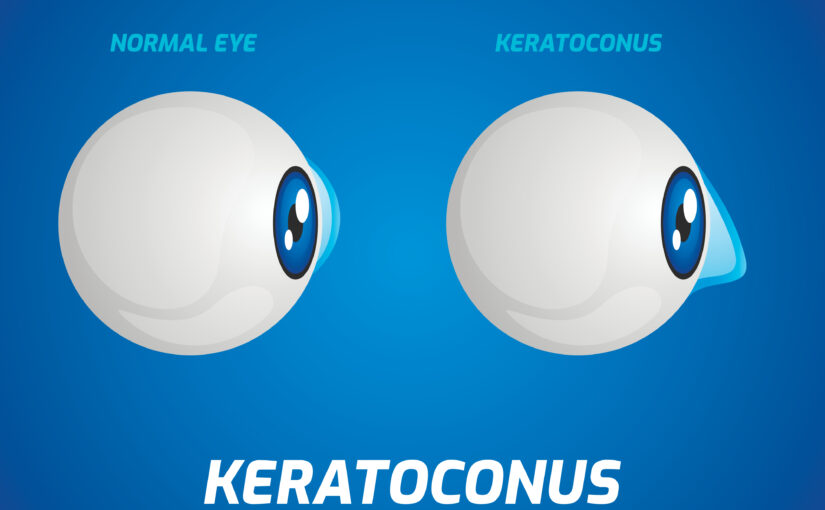Keratoconus is a disorder that is characterized by a bulging cornea (conical in shape) which distorts the patient’s vision. It affects as many as 1 in 400 people. Although the degenerative condition is common enough to keep the eye doctors at Vista Eye Specialists busy, it is not quite common enough that the average person has a good understanding of the problem. This blog should help clear up some of the prevailing myths about keratoconus.
Myth #1: Keratoconus Is Preventable
Although scientists are actively studying keratoconus, the specific cause of keratoconus remains unknown. This makes “preventing” keratoconus impossible.
Since about 10% of keratoconus patients have a parent who also had the condition, there does appear to be a genetic link. Patients who have sleep apnea, retinitis pigmentosa, and Down syndrome are also at elevated risks for keratoconus.
Another risk factor for keratoconus is frequent, vigorous eye rubbing. Eye doctors caution patients not to touch their eyes for several reasons, including avoiding injury and infection, so regardless of whether it can help “prevent” keratoconus, it is a habit worth breaking.
Myth #2: People Get Keratoconus When They Are Older
So many eye problems, such as cataracts, glaucoma, and macular degeneration, are most prevalent in senior citizens. That’s probably why people are under the mistaken impression that keratoconus strikes at an older age.
In reality, most patients first discover that they have keratoconus during their teens. From there, symptoms become worse into their 20s and 30s. Patients who notice something wrong with their eyes should not assume they are fine just because they are young.
Myth #3: Prescription Eyewear Cannot Correct Vision for Keratoconus Patients
Prescription eyewear is helpful to many keratoconus patients, particularly when the condition first starts to develop. Because the bulging of keratoconus causes astigmatism, glasses and contact lenses can help restore clear vision early. As the cornea becomes more conical, doctors may recommend a scleral lens. This is a larger version of a contact lens that is positioned over the cornea rather than on it.
Myth #4: Patients Must Learn to Live with Keratoconus
While it’s true that keratoconus treatment had limited effects in the past, keratoconus is now extremely treatable in most patients. Corneal crosslinking, a non-invasive procedure, is highly effective at slowing or stopping the progression of keratoconus, which negates the need for more serious treatments later. Patients do not need to resign themselves to having unclear vision.
Don’t Hesitate on Medical Care
The most important message that Dr. Binoy Jani and the team of eye doctors at Vista Eye Specialists want to stress about keratoconus is to not ignore early signs of the condition. To protect your vision, seek a diagnosis and treatment as soon as you notice a problem emerging. To make an appointment with our experts, please call (1-888-393-5264).


